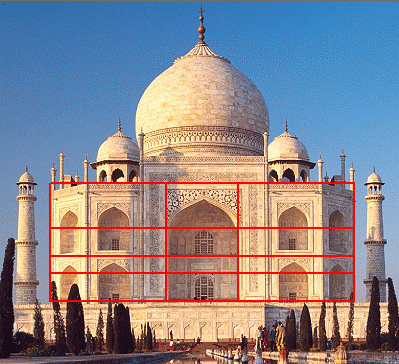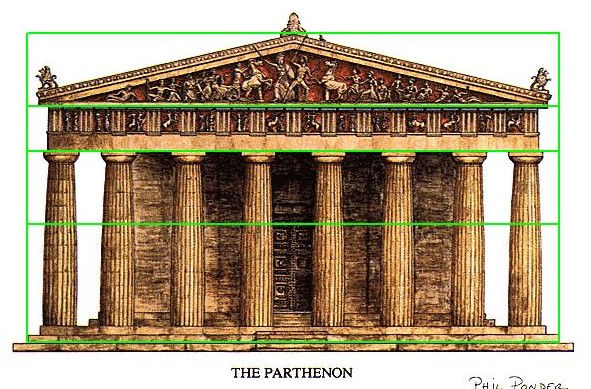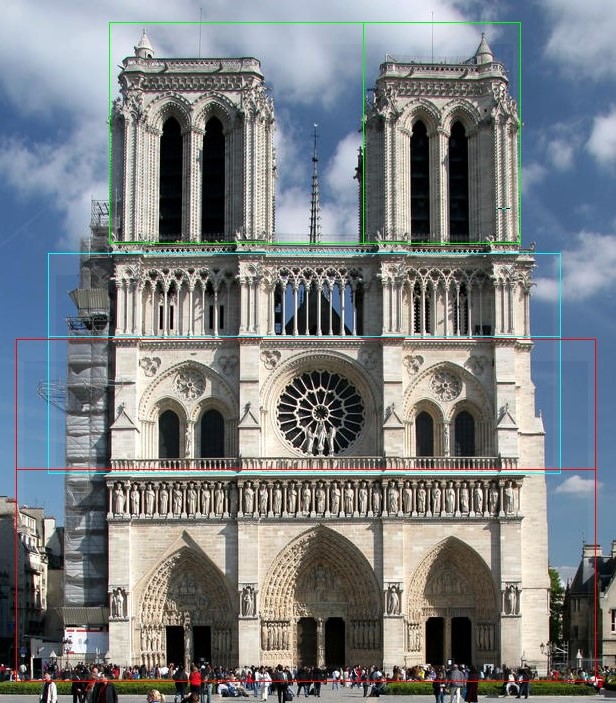The golden ratio appeared in architecture perhaps as early as the Great Pyramid of Giza and in the Parthenon of the Acropolis in ancient Athens. Wherever and whenever it first appeared, it has continued to be embraced by architects in harmonizing their architectural designs with the harmony and beauty of creation itself. Below are illustrations of its application to some of the most notable buildings in the world.

The Taj Mahal displays golden proportions in the width of its grand central arch to its width, and also in the height of the windows inside the arch to the height of the main section below the domes.
The Parthenon displays golden ratios in the height of the cross beams in relation to its height, and also in the rectangular designs below the sculptures. See a detail analysis of golden ratios in the face of the Parthenon.

Notre Dame in Paris reflects these proportions in the heights of each major stage of the structure as well as in the width of the columns at the top.
Each application of the golden ratio is different and unique, but each adds to its overall architectural beauty and harmony with the design principles found in nature. Other famous applications of the golden ratio in architecture include the CNN Tower in Canada, the works of Frank Lloyd Wright and Le Corbussier. It is commonly used in modern architecture as well.